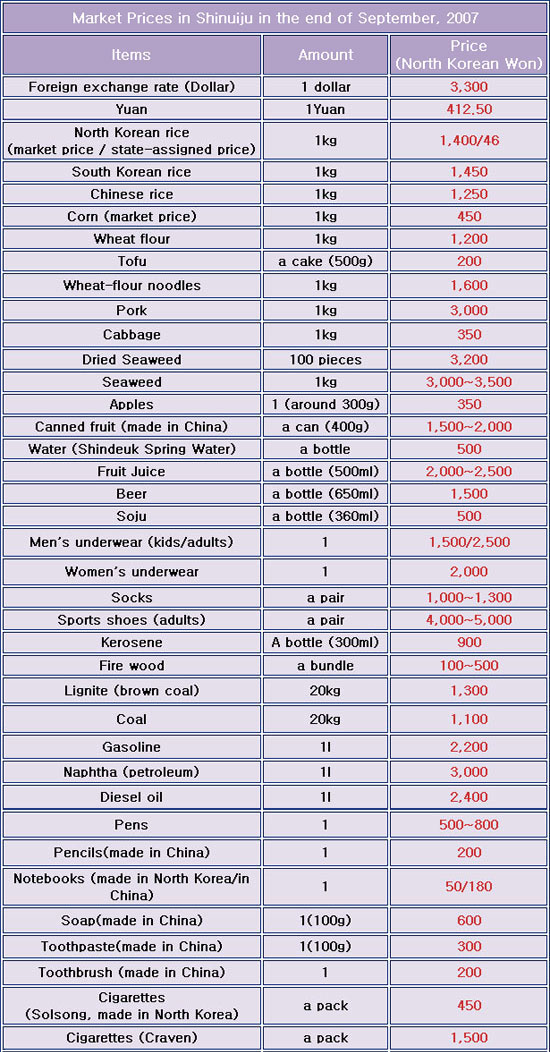Korea Times
Andrei Lankov
10/21/2007
When I was preparing for a trip to Yanbian, people told me that I would not have any difficulties in communicating with the locals: “They all speak Korean there.” It seems like an exaggeration, but it was not.
Every time my poor and broken Chinese was not up to the task, I asked if somebody around could speak Korean and such a person was found in seconds. Indeed, Yanbian is officially known as the Korean Autonomous Prefecture.
From the 1880s the Koreans began to move to the area in large numbers, and by 1949 when the Communists took power in China, they formed a majority in the borderland areas. In 1945 about 1.7 million Koreans lived in China. About 500,000 of those chose to move back to Korea in the late 1940s, but a million or so decided to stay.
Nowadays, the Korean population has reached two million, so some Korean nationalists even describe this part of China as “Third Korea,” together with the North and South Communist China emulated the Soviet approach to ethnic minorities. Ideally, each minority had to be given some kind of autonomous quasi-statehood.
Within such statehood, the ethnic minority would be provided with the education in their native language, the media in this language and some token representation of the minority in the government agencies. This scheme was applied to Yanbian as well, and in spite of all problems this policy has worked so far. On the one hand, Koreans of the area, unlike Koreans in the former USSR, Japan or U.S., have managed to keep their language.
On the other hand, their loyalties seem to remain firmly with Beijing. The Korean language is widely used in the area. Lively talks in Korean can be overheard during walks through the city of Yanji, the capital of the Prefecture. It is remarkable that the language is used not only by elderly people, but often by youngsters as well.
As stipulated by the law, all shops and government agencies have to display signs in two languages, and it is explicitly stated that the Korean text should not be smaller than its Chinese equivalent. The local newsstands sell a number of Korean language publications, ranging from pulp fiction periodicals with semi-nude beauties on the cover to a solid quarterly which publishes the work of local Korean-language writers (such a quarterly seems to be run on a government subsidy).
The ethnic flavor has even become a tourist attraction. The dog meat restaurants are everywhere, and unlike South Korea, they are not hidden but openly advertise themselves. The images of the hanbok-clad ladies are another feature of local advertisements. The promotion of ethnic features seemingly targets both South Koreans and visitors from other parts of China. It is remarkable that until recently the local Koreans overwhelmingly sent their kids to Korean language schools.
The curriculum at those schools was identical to the schools attended by the Han Chinese, but Korean was the major language of tuition. After graduating from high school, young Koreans can proceed to the local university where they are officially granted preferential treatment at the entrance exams, sort of “affirmative action,” Chinese style. Of course, the life of Koreans was not always easy.
There were periods of restrictions and even open persecution, especially in the crazy decade of Mao’s Cultural Revolution in the late 1960s. At those days, the relations between Beijing and Pyongyang went sour, and this influenced the local Korean community to some extent. A middle-aged ethnic-Korean businessman told me, “Back in the late 1960s, I seldom saw my parents. Because they were members of an ethnic minority, they had to go to ideologicalstruggle sessions every day and had to stay until very late.
”However, that period was an exception. The same person, who is buy no means a fan of the current Chinese system, still admitted when I asked him about discrimination: “Discrimination? Well, almost none, to be frank. They appoint some Han Chinese officials to supervise the administration, but basically I don’t think Korean people here have problems with promotions or business because of their ethnicity.
Sometimes being a minority even helps a bit — it’s easier to get to a university if you come from a minority group.” However, in recent years the situation in the area began top change fast. The Koreans began to switch from their native language to the Chinese (or, to be more precise, Chinese is increasingly seen as a native language by the children born in Korean-speaking families). Schooling in Korea faces a major crisis.
According to statistics, widely known and discussed, the number of children enrolled in Korean schools in 2000 was merely45.2 percent of the 1996 level. In the 1990-2000 period, 4,200 Korean teachers, or some 53 percent of the total, left their jobs because of school closures. It is remarkable that younger people with whom I could talk often have obvious problems with communicating in Korea, and whenever possible prefer to switch to Chinese. In families they still talk Korean to the elders, but Chinese is a natural choice between themselves.
In short, the assimilation began, and it might be unstoppable. Koreans leave their villages and go to the cities where they work and cooperate with Chinese. They often intermarry, and Chinese becomes the sole language of their kids. Like it or not, but the days of the “Third Korea” seems to be over.

